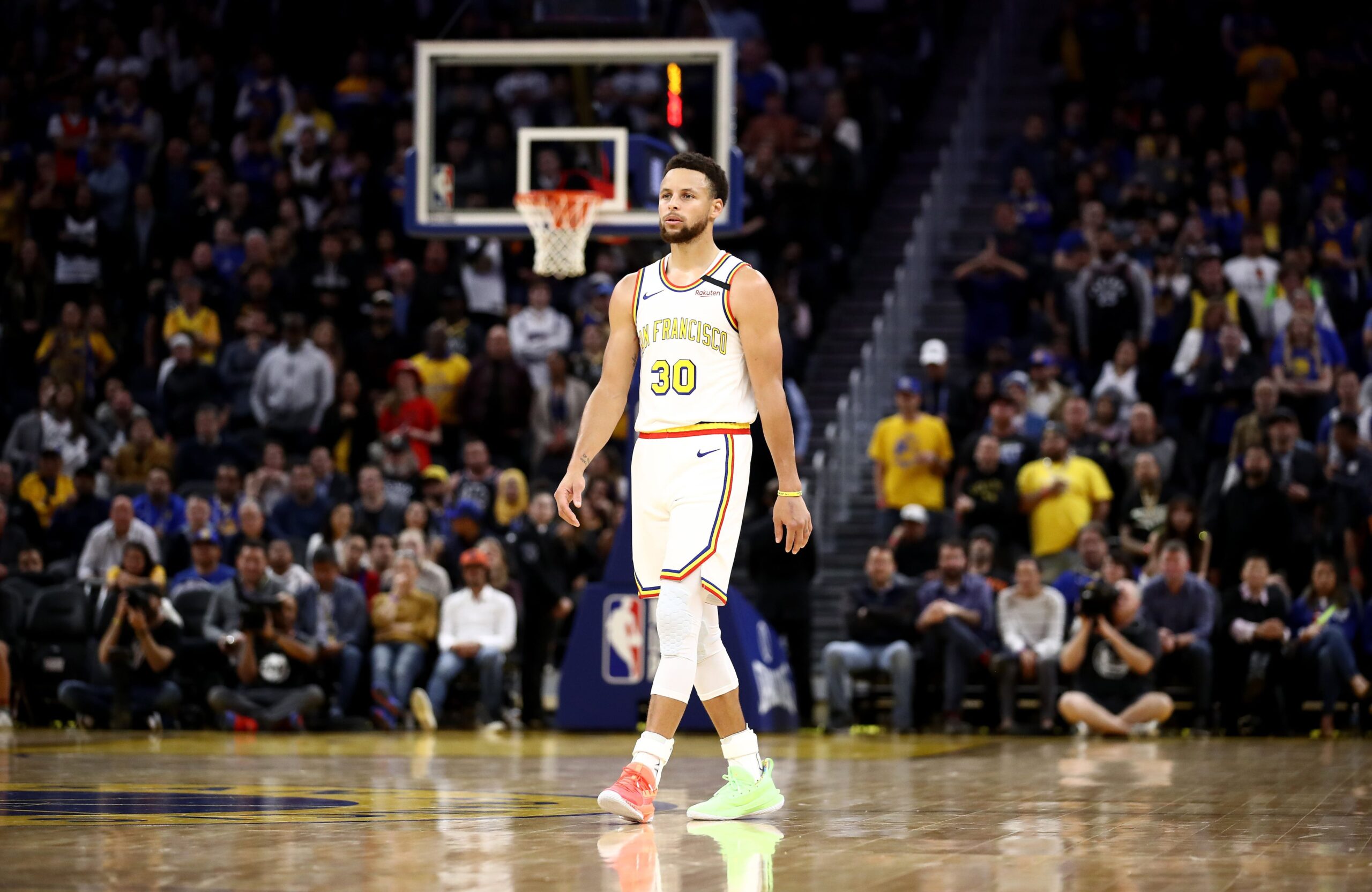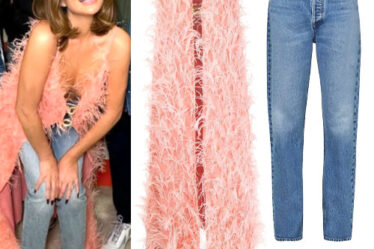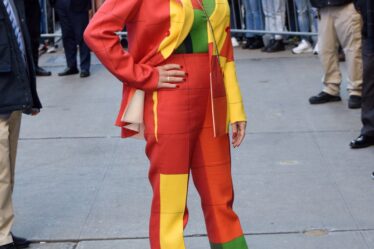
Time is running out for Stephen Curry.
The star Golden State Warriors guard says he hopes to have four or five years left in his National Basketball Association career. But with retirement on the horizon, he’s rushing to capitalise on his athletic triumphs by bringing his brand off the court and on to the streets through his partnership with athletic-wear maker Under Armour Inc.
Curry — at 35, one of the greatest stars in basketball history — is still a commanding presence in the league and his performance-oriented basketball shoes single-handedly made Under Armour relevant in the sport. Yet his efforts to come up with a product that appeals to committed sneakerheads haven’t kept pace with those of basketball legends like Michael Jordan or up-and-coming stars including Ja Morant and LaMelo Ball, whose shoes outsell Curry’s on popular sneaker marketplaces like StockX.
Curry discussed his retail ambitions ahead of the NBA’s All-Star game in Indianapolis earlier this month. “What kind of legacy can I really leave? I want to play the game at a high level as long as I can, but this is an opportunity to create more ownership,” Curry, a four-time NBA champion, said while en route to his temporary store that Under Armour set up for the All-Star weekend.
Under Armour also has a lot riding on Curry. Last March, he signed a long-term contract extension with the sportswear giant to take their partnership past signature shoes. As part of the arrangement, he became president of the Curry Brand, with plans to sell streetwear and serve as the face of the label. Detailed financial terms weren’t disclosed, but in April he was granted $75 million in stock as part of his compensation package, according to regulatory filings.
Curry’s involvement is vital to Under Armour’s efforts to reenergise its business after years of sluggish growth. Footwear accounts for about a quarter of Under Armour’s annual revenue, with the segment’s sales totalling almost $1.5 billion last year, but it still trails far behind Nike Inc. and Adidas AG. The company doesn’t break out Curry-specific numbers, but TD Cowen last year estimated the brand accounts for as much as $250 million in annual sales.
Under Armour Chief executive officer Stephanie Linnartz, who took the helm last February, is looking to bring the label into what she calls “sports style” – casual athletic clothes meant to be worn in everyday life. Over the past decade, Under Armour has failed to carve out a significant piece of the booming streetwear market, known for its limited-edition drops and much-hyped collaborations that have sneakerheads lining up around the block.
“I am still digging in deep to figure out exactly how we’ll map that out over multiple years,” Linnartz, a former Marriott International Inc. executive, said of the Curry brand. Executives haven’t yet set specific sales targets. “It’s going to be a really important part of the Under Armour portfolio,” she said.
Since taking the top job, Linnartz has embarked on a three-year turnaround plan for Under Armour, pushing deeper into womenswear and footwear in order to return to growth in its home market. The company raised its full-year earnings forecast in February, but reported a 12 percent drop in North American revenue.
All the major sportswear companies have faced challenges in the past year. At Adidas, management is trying to recoup costs by selling leftover shoes from its Yeezy label that imploded just over a year ago. Nike laid off about 2 percent of its global workforce earlier this month as it tries to cut $2 billion in costs.
Nike still commands the most successful sneaker deal ever signed with an athlete – and it’s not even close. Michael Jordan’s brand, at more than $5 billion in global sales annually, remains the gold standard more than 20 years after the basketball legend sank his last bucket in the NBA. Even Steph would like to be like Mike.
“You look at examples like the Jordan brand — the peak of an athlete taking their platform and presence and turning it into something,” said Curry. “I’m trying to build my version of that.”
Nike’s Blunder
Under Armour didn’t always have the greatest shooter of all time on its roster. Curry once wore the Swoosh.
Curry played in Nike sneakers during his time at Davidson College in North Carolina and signed a four-year deal with the world’s largest sportswear company when the Warriors selected him with the seventh pick in the 2009 NBA draft.
As the deal expired, Curry broke out as an All-Star and made the playoffs for the first time. Nike had a chance to keep him. In a saga revisited years later by ESPN, a sloppy pitch meeting from Nike executives, who mispronounced his name and presented a slide deck with Kevin Durant’s name on it, helped convince Curry to try something new.
In 2013, Curry signed with Under Armour and within two years released his first signature shoe, the Curry I, backed by ads starring Jamie Foxx. Over the next decade, as Curry won two NBA Most Valuable Player awards alongside his championships, Under Armour developed and sold 11 new Curry designs, with the most recent hitting stores in October.
Yet few of those designs won over hardcore sneaker fans. “It’s a challenge for sure,” said Curry. “It’s something that you have to earn over time.”
These days, there is some demand for Curry’s sneakers on the secondary market, where sneakerheads do their trading. Morant, a Memphis Grizzlies guard who has an endorsement deal with Nike, had the best-selling signature basketball shoe in terms of volume on StockX’s resale platform last year, with 40,000 sales. Nike’s LeBron James, Kobe Bryant, Kevin Durant and Giannis Antetokounmpo all had hits, joined by Jordan’s Jayson Tatum and Luka Doncic. Puma’s Ball and James Harden at Adidas had top sellers too. Curry’s shoe came in 10th, with just over 2,000 transactions.
Golf Shoes
Under Armour also plans to develop non-basketball shoes under the Curry name. Designers have so far only dabbled in off-court kicks, with a golf shoe, runners and a line of cushioned trainers touted as soft and cozy.
In apparel, most of Curry’s products are geared toward men and boys, with boxy tees, hoodies and sleeveless shirts, but more women’s clothing is on the way. Curry said there’s “definitely going to be investment” in that space and his wife Ayesha, founder of home goods maker Sweet July, wants to be involved in the process too.
Management is looking abroad for growth as well, trying to take advantage of their star’s global reach, focusing on the UK, France, Spain and especially China. Curry and the Warriors squad have consistently placed among the top spots in basketball popularity polls in China, according to digital agency Mailman Group. He last visited the market with Under Armour in 2019, touring Shenzhen, Beijing and Shanghai for a series of exhibitions.
New Faces
In October, Curry Brand brought on Sacramento Kings guard De’Aaron Fox as its first-ever sponsored athlete, with his first signature shoe line set to debut this year. The tactic is from Jordan’s playbook, but with a twist. Jordan was in retirement when he signed Carmelo Anthony as an additional face of his brand and granted him the first-ever non-MJ signature Jordans in 2004. Curry and Fox faced off against each other on the court three times this year.
Curry said he is now trying to recruit more athletes to his label. If his own assessment is correct, he’ll step away from basketball when he’s around 40 years old, the same age Jordan did, and Under Armour’s leading man will no longer be on television under the bright lights of NBA arenas 82 times a year.
Until then, he’ll keep juggling responsibilities. Under Armour’s top management holds a business review with Curry every quarter. Most of the meetings are centered around basketball, but lately they have been discussing more golf, running and fashion. Linnartz said they are considering opening permanent Curry stores, though there are no immediate plans.
After 14 seasons in the league, Curry has accumulated a wide-ranging business portfolio beyond Under Armour. He has a production firm, Unanimous Media, that made shows like ABC’s mini-golf programme “Holey Moley” and the documentary “Jump Shot.” There’s also his Gentleman’s Cut bourbon label and an early-stage venture capital firm that has invested in startups such as HiveWatch security hardware and micro food hall Local Kitchens. Under Armour, though, is at the top of Curry’s priority list, he said.
“Right now, it’s about setting the foundations,” said Curry. “I want them to be well-oiled machines so when I’m done playing I can spend more time on them and take full advantage of the platform that I had.”
By Kim Bhasin



